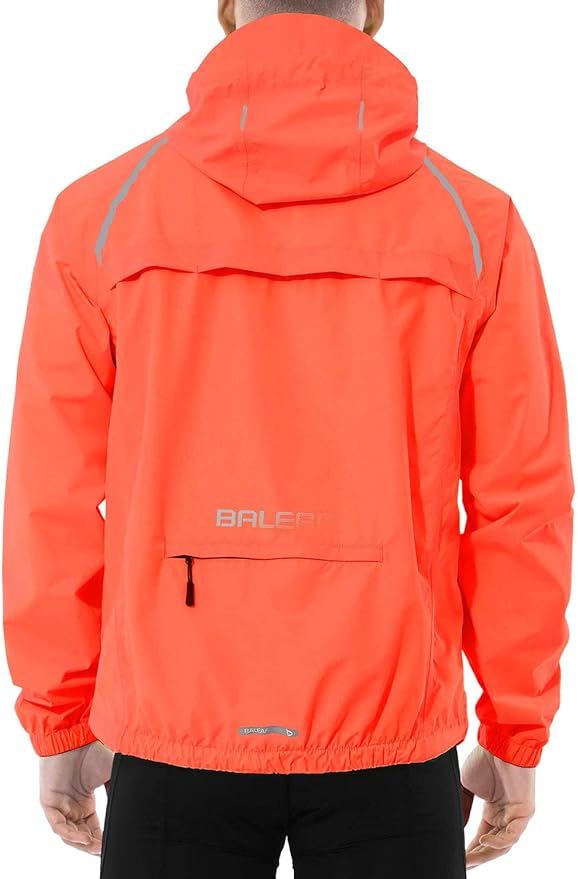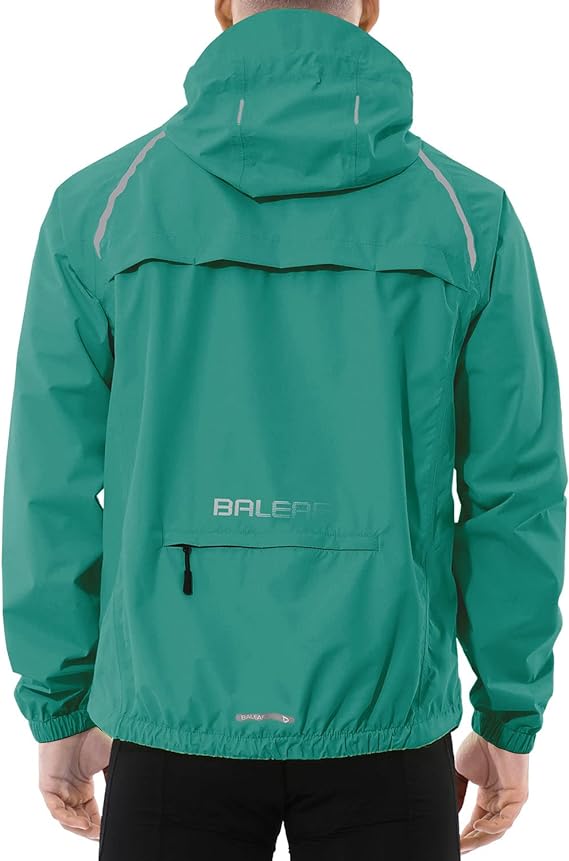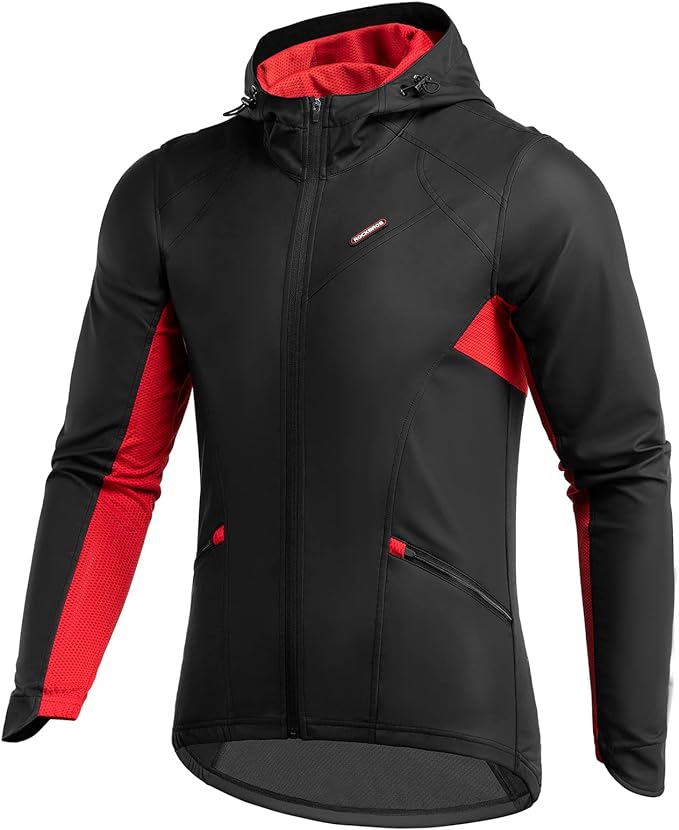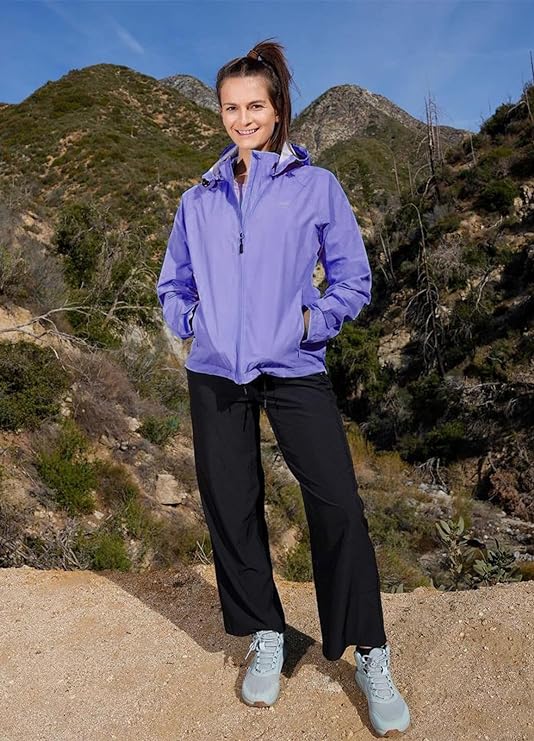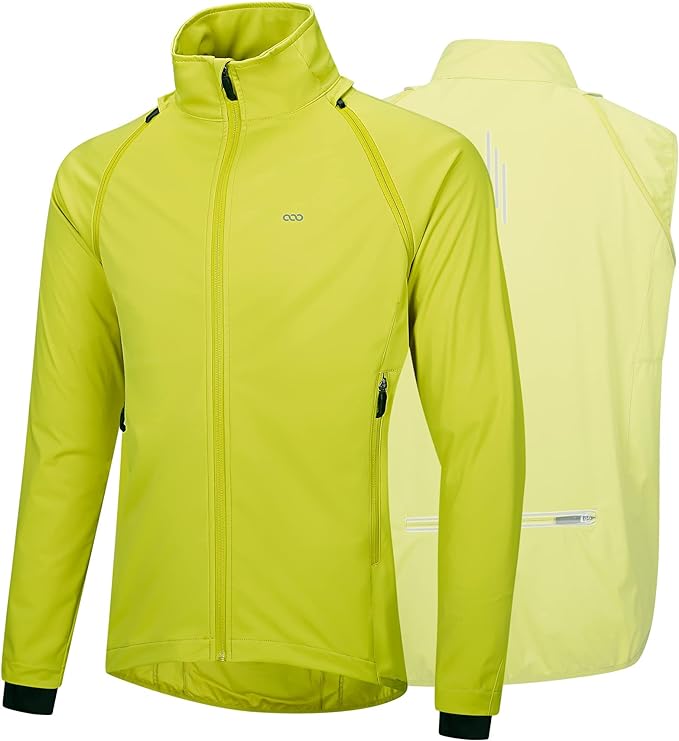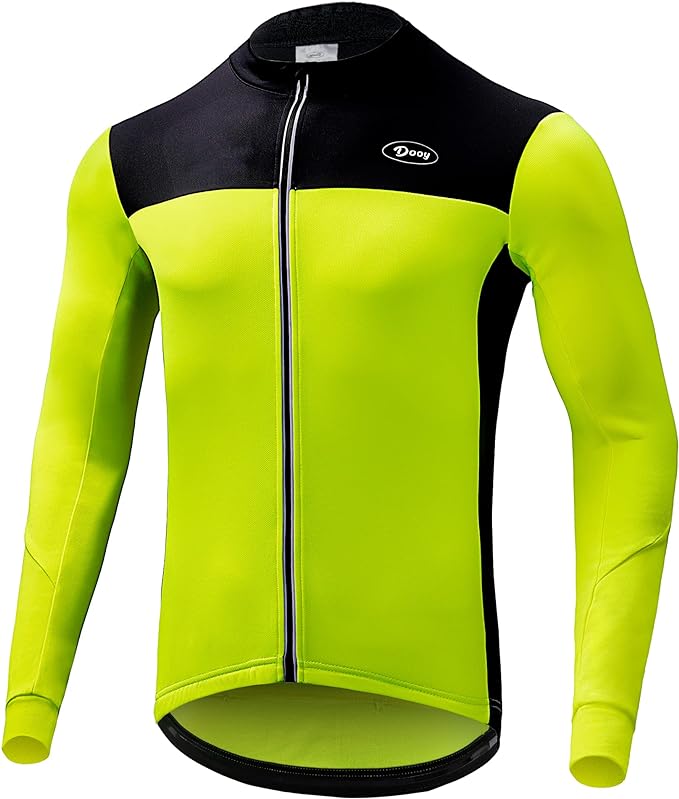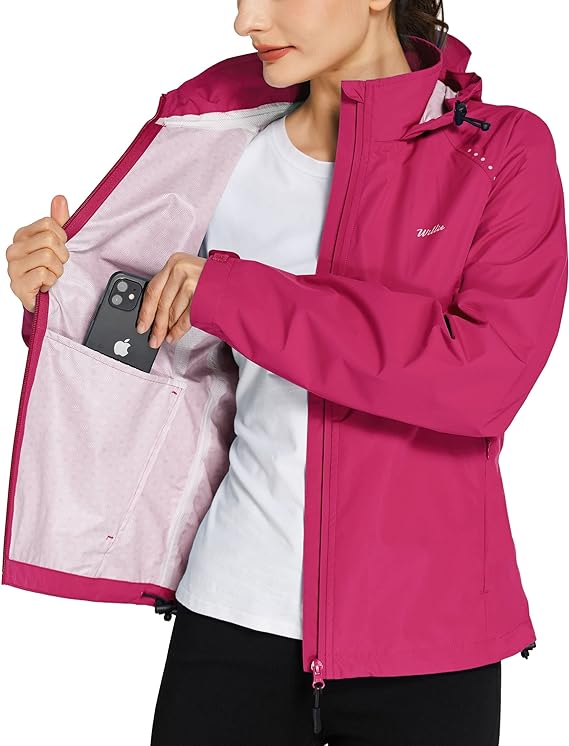You might be wondering whether cycling jackets are really necessary for biking. If you want to be comfortable while enjoying a bike ride, the answer is a definite yes. A jacket is the last layer of clothing you will put on before you set out.
Perhaps you need a waterproof jacket for when it rains, a windproof one for when it’s cold and windy, or extra thermal insulation if the temperature is very low.
These days there are many types of cycling jackets to choose from. You might like something aerodynamic and tight-fitting, or perhaps you prefer a weather-beating jacket which can double up as a coat for chilly mornings. Cycling jackets are highly technical.
They have to cope with whatever the elements throw you way, as well as being breathable so sweat can evaporate and you don’t overheat.
Choosing the right outer layer can turn a miserable bike ride into a fun one. Insulation and wind-proofing are likely your main concerns. Feeling damp isn’t usually pleasant either, so a highly breathable jacket is important, as is a great biking backpack.
Your biking experience will be revolutionized if you choose the right cycling jacket.
Table of Contents
Staying Warm in the Winter
A long-sleeved jersey is a good way to keep the wind off your arms and conserve heat. Layering is not only the best method to lock in the warmth but it’s also easy to remove a layer or two if the weather warms up later during your bike ride.
Try pairing a long-sleeved jersey with a winter cycling jacket. You can even add a vest under the jersey, or a lightweight windproof gilet between the jersey and the jacket.
You will generate a breeze when riding your bike, even if it’s not a windy day. This can soon lead you to be cold, which is why you should choose windproof fabrics so you can ride comfortable all year round. A lot of jackets will be water resistant to some degree, which means they will keep you dry during a rain shower.
Wear the jacket during the cool morning and then stow it in your jersey pocket or bike pannier when it warms up. You can then put it back on for your descent later. Other accessories made from windproof fabrics include gloves, hats, under-helmet hats, overshoes and face-masks.
Useful Features to Have in Cycling Jackets
There are many styles and designs of cycling jackets, so in order to choose the best one for you, it’s a good idea to know which features are available and which you will need, as well as ones you can do without.
These are some features to consider, and we will look at each one in turn:
- The zipper
- Dipped hems
- Color
- Pockets
- Materials
- Waterproofing
- Breathable
- Specific fit
- Weight and size
- Hood
- Waistband and sleeves
- How to wash it
The Best Zipper
A waterproof jacket should not let water get through any seam or zip. The jacket should have a zipper garage so water can’t seep through to your under layers. This is especially important if you plan to ride in harsh conditions.
YKK zips stand up well to wear and tear and they are really durable. Venting can be improved when the rain stops and the sun comes out by choosing a full-length zipper.
Dipped Hems
A dipped hem, or dropped hem, is longer at the back of the jacket than at the front, so it can provide good coverage when you’re seated on the bike. A dipped hem can stop unwanted drafts and keep out chills and debris on the trail. Elasticated or adjustable cuffs and hems help keep the wind and rain out.
The Best Color
If you aren’t sure what color of cycling jacket to get, you can’t go wrong with neon. It makes you extra-visible on the road.
Even if a jacket isn’t all-over neon, it might be equipped with reflective detailing. This increases your safety when you’re cycling in low level light. The reflective detail might be a logo or one or more reflective strips. The whole jacket can also be made from reflective material.
If you will be commuting in the cycling jacket, opt for one that has bright hi-vis colour options and reflective elements. Some even come with integrated LED lights to give you extra visibility at night.
Scotchlight reflective material is lit up by car headlights, and bright or neon block colors are also good for daytime visibility.
Pockets
Cycling jacket pockets are a very important feature to consider. They can be Velcro flaps, zippered or open with some stretch at the top. You might like a waterproof pocket for your mobile phone or integrated cord management for headphones.
A little zippered pocked is good for your keys, while big back pockets can be used to carry clothing, food or equipment.
A lot of cycling jackets can be stuffed in their own pocket and then zipped up for portability. Some mountain biking jackets have front hand warmer pockets. There might be a stash pocket on the back or a chest pocket on the front where you can store snacks for easy access during the ride.
If you are absent-minded, you might like to forgo back pockets, since the jacket will be on top of your other clothes and should be keeping bad weather away. Accidentally putting your mobile or another valuable in the back pocket and then experiencing a rain shower isn’t going to be a good combination!
Materials
The world of textiles constantly changes and evolves, and different brands of cycling jackets have their own names for fabrics, as well as materials given proprietary names because they are special-made and differ slightly from another material.
A nylon, Lycra and polyester blend is typical for many cycling jackets. These can come with or without waterproofing and wind-proofing treatments. It’s a good idea to find a balance between breathability and waterproofing for maximum rider comfort.
Waterproofing
A high quality cycling jacket is crucial if you want to bike regardless of the weather. Also known as hard shell jackets, these are designed to stop you getting too cold when water on your skin is combined with wind chill. You will stay warmer and more comfortable if you can stay dry.
There are technical breathable waterproof laminates in today’s bike jacket marketplace so you can easily find a good hard shell jacket. Remember there is a big difference between being waterproof and just water-resistant.
How is Waterproofing Measured?
The waterproof measurement of a jacket is determined by the ‘hydrostatic head’ of the fabric. This means how much water pressure it would take to penetrate it. In order to be considered waterproof the fabric has to have a hydrostatic head of 1.3m.
It’s better to look for 10m, and some even go up to 30m. A waterproof jacket is usually windproof as well.
A jacket has to have weather-proof zips and taped seams to ensure water can’t seep through to your clothing, in order to be classed as waterproof. Such jackets also have a DWR coating on the outside so water drops will bead up and roll off.
Breathability
A breathable cycling jacket lets unwanted moisture vapor and sweat escape via little holes in the fabric. This is an effective way of regulating your body temperature.
Although the more waterproof a jacket is the less breathable it is, there is an exception to the rule. Premium jackets are made of GoreTex or a similar advanced fabric which can let vapour out without letting water in. A jacket with good breathability will help keep you dry and comfortable during the ride.
How is Breathability Measured?
It is measured by how much water vapor will get through the jacket in 24 hours, and it’s recorded as g/m2 or grams per square meter. Sometimes you will just see the G rating. The higher it is, the more breathable the jacket.
Specific Fit
The type of biking you are going to be doing affects what fit you should look out for. A road cyclist or someone who will be racing will want an aerodynamic, tight cut without material flapping around and causing drag.
Someone riding fast on a road bike or cross-country MTB will want a slimmer cut, a light weight and breathability.
A commuter or mountain biker will prefer a looser cut offering more freedom of movement, and perhaps also a hood. Extra space under the jacket for your work clothing is handy as well. Also take into account the style and off-bike practicality of the fit.
Weight and Size
If you want to be able to take your jacket off, roll it up and stuff it in a pocket, you might want to opt for a soft shell jacket. These are more windproof and waterproof than long-sleeve jerseys and are also warmer.
Soft shell jackets are easy to stow away when you aren’t wearing them because they roll up small and don’t weight much. You will want a lightweight jacket in the summer instead of a bulky coat, preferably one you can stash in your backpack or jersey pocket ready for when the weather turns.
Most soft shell jackets are water-resistant rather than waterproof though, so that’s something to bear in mind if you’re looking for an all-season jacket or something for a cold climate.
Hood
A stowable hood that can slip under your bike helmet is handy. A removable hood is great for rides where the rain is stopping and starting.
A cinch at the back of the hood will keep it in place so you don’t lose visibility when turning your head.
Waistband and Sleeves
The waistband on a cycling jacket is a combination of cords and elastic. Some have an ergonomic fit that doesn’t need anything else mechanical but even the most basic jackets will have some kind of elastic around the waist.
Looser-fitting ones might have an elastic or non-elastic drawstring, preferable with one-handed operation and cord locks.
The cuffs on sleeves are typically elasticated on cycling jackets to stop wind blowing up there and so you can wear gloves under the cuff.
A jacket with zip-off sleeves can be a great buy because they offer more versatility. If you only need to keep your core warm, you can remove the sleeves.
How to Wash It
Check the washing instructions which are usually found inside the jacket on a label. Some jackets have specific washing requirements while others can just go in a normal wash.
More Tips for Choosing a Cycling Jacket
A good cycling jacket is very important in the winter when it needs to protect you from wet and cold weather.
However you will still need an outer layer in the spring, autumn and summer months, since the British weather isn’t known for being predictable! On the warmer days, you should choose a jacket that protects you but doesn’t overheat you.
Cycling jackets are just one clothing item that cyclists should consider. When you are affected by issues like the weather, sweating, pedals, gears and chains getting in the way, and maybe even saddle-soreness, it is worthwhile investing in good cycling clothes.
Whether you are taking a long or short trip on the bike, it pays to wear specially designed cycling clothing to boost your efficiency and increase your comfort, so you can stay focused on the road ahead.
Cycling Jackets: In Conclusion
A good winter cycling jacket should have vents for breathability, taped seams for waterproofing capability, reflective details for visibility, and a high neck to keep the cold off your neck. Cycling jackets come in all kinds of designs and price points, with a variety of features.
So you will want to consider how often you ride your bike, what kind of cycling you do, the length of your cycling trips, and any other personal preferences.
That way you can make the best choice and pick the best cycling jacket which hopefully will keep you comfortable and warm for many years to come.
